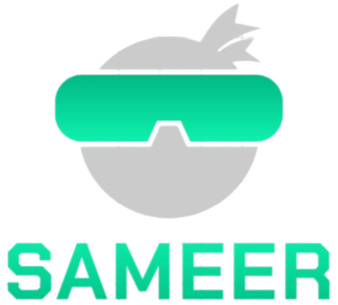Introduction
In today’s world, many mobile applications rely on Bluetooth functionality for a variety of tasks such as audio streaming, health monitoring, and device control. As a Unity developer, you might find yourself needing to detect whether a Bluetooth device, like headphones or speakers, is connected to a user’s device. In this tutorial, we’ll walk you through the process of implementing Bluetooth device detection in Unity for both iOS and Android platforms.
Why Detect Bluetooth Devices?
Bluetooth detection is essential for many apps that need to determine if a user has a connected audio device. For example, a music app might want to ensure that headphones are connected before playing audio, or a fitness app might want to check if a heart rate monitor is available. By implementing Bluetooth detection, you can improve user experience by adapting your app’s behavior based on the presence of Bluetooth devices.
Setting Up the Unity Project
Before diving into platform-specific implementation, let’s set up the Unity project:
- Create a New Unity Project: Open Unity and create a new 3D or 2D project, depending on your preference.
- Organize Your Project: To keep things clean, create folders for your scripts and platform-specific plugins:
Assets/Scripts/Assets/Plugins/Android/Assets/Plugins/iOS/
Implementing Bluetooth Detection on Android
Creating the Java Plugin
To detect Bluetooth devices on Android, we’ll create a Java class that will handle the Bluetooth detection logic. Here’s how to do it:
- Create the Java Class: Under
Assets/Plugins/Android/, create a new Java file namedBluetoothCheck.java. Add the following code:
package com.yourcompany.bluetoothcheck;
import android.bluetooth.BluetoothAdapter;
import android.bluetooth.BluetoothProfile;
public class BluetoothCheck {
public static boolean isBluetoothAudioDeviceConnected() {
return isProfileConnected(BluetoothProfile.HEADSET) || isProfileConnected(BluetoothProfile.A2DP);
}
private static boolean isProfileConnected(int profile) {
BluetoothAdapter mBluetoothAdapter = BluetoothAdapter.getDefaultAdapter();
return mBluetoothAdapter != null && mBluetoothAdapter.isEnabled()
&& mBluetoothAdapter.getProfileConnectionState(profile) == BluetoothProfile.STATE_CONNECTED;
}
}
This code checks if a Bluetooth headset or A2DP (Advanced Audio Distribution Profile) device is connected and returns true if either is connected.
- Adding Permissions: You need to ensure your app has the required Bluetooth permissions. Open
Assets/Plugins/Android/AndroidManifest.xmland add the following lines:
<uses-permission android:name="android.permission.MODIFY_AUDIO_SETTINGS"/>
<uses-permission android:name="android.permission.BLUETOOTH"/>
Integrating with Unity
To call the Java method from Unity, we use the AndroidJavaObject class:
- Unity C# Script: Create a C# script named
BluetoothDetection.csunderAssets/Scripts/. Add the following code:
using UnityEngine;
public class BluetoothDetection : MonoBehaviour {
public bool IsBluetoothAudioDeviceConnected() {
if (Application.platform == RuntimePlatform.Android) {
using (var javaUnityPlayer = new AndroidJavaClass("com.unity3d.player.UnityPlayer")) {
using (var currentActivity = javaUnityPlayer.GetStatic("currentActivity")) {
using (var bluetoothCheck = new AndroidJavaObject("com.yourcompany.bluetoothcheck.BluetoothCheck", currentActivity)) {
return bluetoothCheck.CallStatic<bool>("isBluetoothAudioDeviceConnected");
}
}
}
}
return false; // Return false if not on Android
}
}
This script checks if the platform is Android and then calls the Java method to check for a connected Bluetooth device.
Implementing Bluetooth Detection on iOS
Creating Objective-C++ Files
On iOS, we’ll use Objective-C++ to interact with the Bluetooth functionality. Here’s how to set it up:
- Creating Objective-C++ Files: In your Unity project, navigate to
Assets/Plugins/iOS/and create two files:BluetoothCheck.handBluetoothCheck.mm.
BluetoothCheck.h:
#import <Foundation/Foundation.h>
@interface BluetoothCheck : NSObject
+ (BOOL)isBluetoothAudioDeviceConnected;
@end
extern "C" {
bool _IsBluetoothAudioDeviceConnected();
}
BluetoothCheck.mm:
#import "BluetoothCheck.h"
#import <AVFoundation/AVFoundation.h>
@implementation BluetoothCheck
+ (BOOL)isBluetoothAudioDeviceConnected {
AVAudioSession *session = [AVAudioSession sharedInstance];
NSArray *routes = [session currentRoute].outputs;
for (AVAudioSessionPortDescription *route in routes) {
if ([route.portType isEqualToString:AVAudioSessionPortBluetoothA2DP] ||
[route.portType isEqualToString:AVAudioSessionPortBluetoothLE] ||
[route.portType isEqualToString:AVAudioSessionPortBluetoothHFP]) {
return YES;
}
}
return NO;
}
@end
extern "C" bool _IsBluetoothAudioDeviceConnected() {
return [BluetoothCheck isBluetoothAudioDeviceConnected];
}
This code checks if any Bluetooth audio devices (like A2DP, LE, or HFP) are connected and returns true if so.
Integrating with Unity
To call the Objective-C++ method from Unity, we’ll use the DllImport attribute:
- Unity C# Script: In the same
BluetoothDetection.csscript, add the following code for iOS:
public class BluetoothDetection : MonoBehaviour {
[DllImport("__Internal")]
private static extern bool _IsBluetoothAudioDeviceConnected();
public bool IsBluetoothAudioDeviceConnected() {
if (Application.platform == RuntimePlatform.IPhonePlayer) {
return _IsBluetoothAudioDeviceConnected();
}
return false;
}
}
This code allows you to call the iOS method to check if a Bluetooth device is connected.
Final Steps: Post-Process Script
To automate the inclusion of necessary frameworks and ensure the proper setup in Xcode, we use a Post-Process Build script:
- Post-Process Build Script: Create a script named
PostProcessBuild.csunderAssets/Scripts/:
using UnityEngine;
using UnityEditor;
using UnityEditor.Callbacks;
using UnityEditor.iOS.Xcode;
using System.IO;
public class PostProcessBuild {
[PostProcessBuild]
public static void OnPostProcessBuild(BuildTarget buildTarget, string path) {
if (buildTarget == BuildTarget.iOS) {
string projPath = PBXProject.GetPBXProjectPath(path);
var proj = new PBXProject();
proj.ReadFromFile(projPath);
string targetGuid = proj.GetUnityFrameworkTargetGuid();
proj.AddFrameworkToProject(targetGuid, "CoreBluetooth.framework", false);
proj.AddFrameworkToProject(targetGuid, "AVFoundation.framework", false);
proj.WriteToFile(projPath);
}
}
}
This script automatically adds the necessary frameworks (CoreBluetooth and AVFoundation) to your Xcode project, ensuring everything is set up correctly.
Testing and Debugging
Testing on Devices
Once everything is set up, build your project and test it on both Android and iOS devices. Ensure that the Bluetooth detection works as expected in various scenarios, such as with headphones, speakers, or other Bluetooth devices.
Debugging Common Issues
If you encounter issues:
- Permissions: Ensure that all necessary permissions are correctly added to your AndroidManifest and Info.pl
